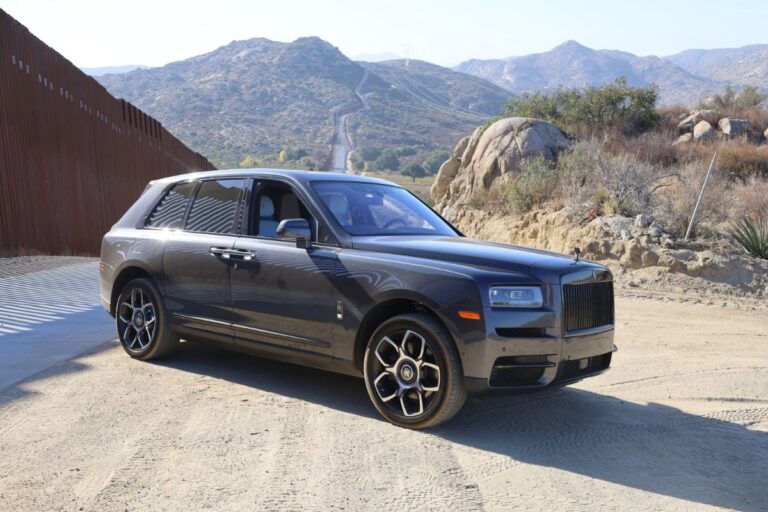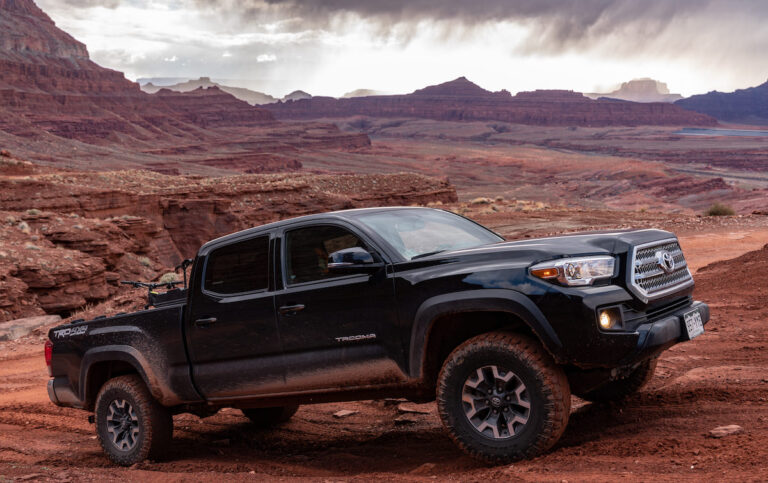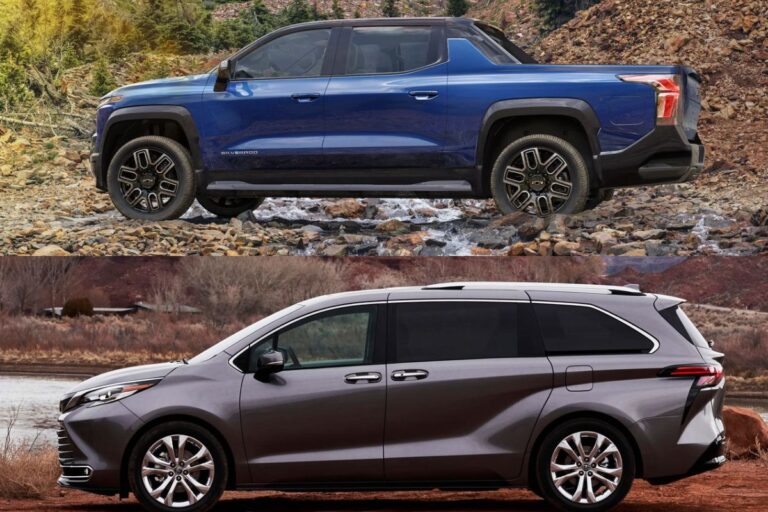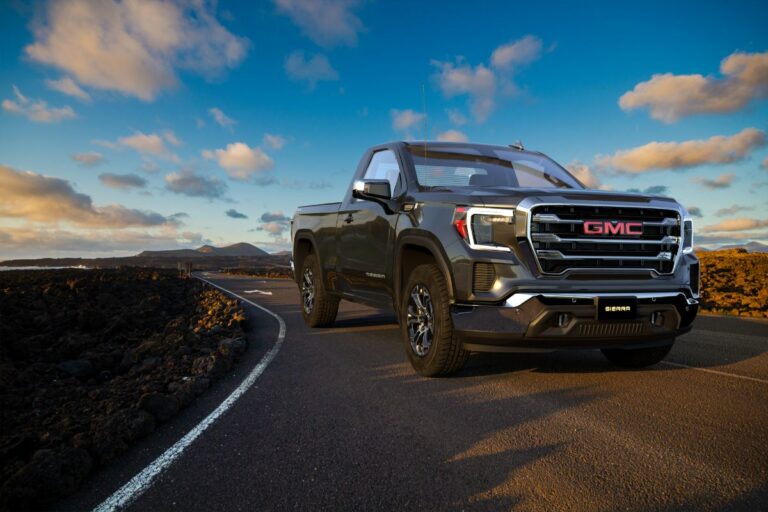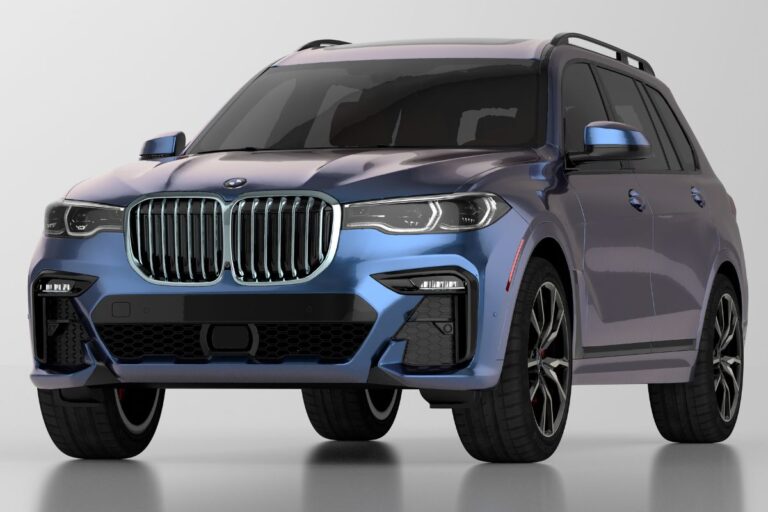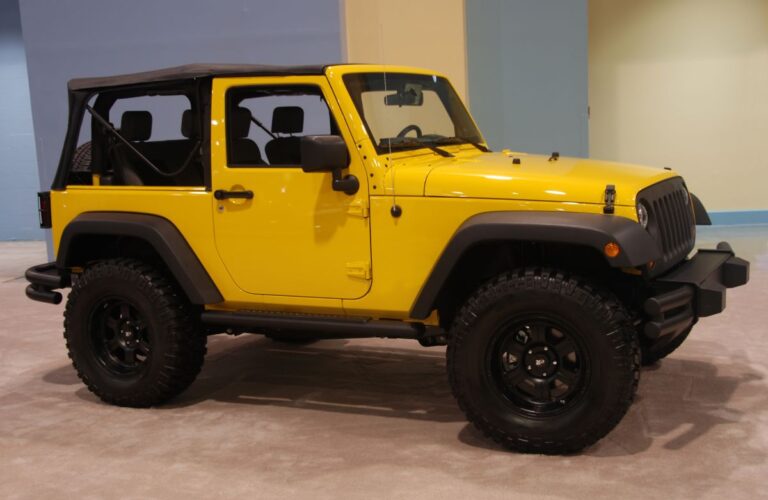
When it comes to subcompact SUVs, the Subaru Crosstrek is an entry that has quickly grabbed the attention of anyone looking for something that will work in the city and on dirt tracks. This small SUV was introduced in 2012, making it a new entry into the car market for subcompacts.
The latest generation was introduced in 2017, highlighting all the new options available in the engine and sharper lines to make it competitive with modern subcompacts. One of the most attractive things about the Crosstrek is its price range, starting at $22 245 and reaching a high of only $27 995.
Accompanied with the base price tag is a 2.0-liter four-cylinder engine that provides 152 horsepower, with higher trim models coming with a 2.5-liter inline-four-cylinder engine that provides 182 horsepower. It is well known that the Crosstrek could perform much better with the addition of a turbo.
These two engines can easily provide the Crosstrek with enough power to make it comfortable to drive when in the city or the highway. However, it does not perform well when tested on tracks or accelerating, with the engines usually feeling rather lethargic.
Fortunately, combined with the CVT gearbox that all models come with, the Crosstrek does well with fuel efficiency. In the city, it achieves 28 mpg while on the highway, it does 33 mpg; however, adding the manual transmission changes this to 22 mpg and 29 mpg, respectively.
Overall, there are six models to choose from with the Crosstrek, the Manual, Premium Manual, CVT, Premium CVT, Sport CVT, and the Limited CVT. Even the base manual model comes with almost every feature you need, including traction control, brake assist, stability control, and full airbags around the car.
- Front headroom – 39.8 inches
- Front legroom – 43.1 inches
- Front shoulder room – 56.7 inches
- Rear headroom – 38 inches
- Rear legroom – 36.5 inches
- Rear shoulder room – 55.6 inches
- Trunk volume – 55.3 ft3 (Seat Row 1)
- Trunk volume – 20.8 ft3 (Seat Row 2)
- Trunk volume – 20.8 ft3 (Seat Row 3)
As standard, the Crosstrek has Android Auto, Apple CarPlay, AM/FM stereo, Aux ports, Mp3 player, and Smartphone integration. As you move through the model options, you will move from cloth seats to full leather seats as a standard; however, this can be changed as you please.
The front seats are also bucket seats as a standard, with full climate control to ensure that you are always comfortable. With a backup camera, auto headlights, steering wheel controls, automatic wipers, and cruise control, all standard from the manual model onwards.
Top Three Cars Similar to the Subaru Crosstrek
Now that we know what the Crosstrek is and its features, we can start looking at the alternatives on the market. Many of which may be preferred simply because of brand loyalty towards a specific car manufacturer.
The first three subcompact SUVs we are taking a look at our direct comparisons for the Crosstrek and, in some instances, offer much better overall features than the Crosstrek. This is simply because of engine performance or having a higher price tag for SUVs.
1. Kia Soul

The Kia Soul is the boxy direct competitor to the Crosstrek that has made itself loved worldwide by being filled to the brim with features and having great engine options. As far as we can see, the only downsides to it are the outdated box shape and the mixture of high quality and plastic materials on the inside.
The Soul has an affordable price that starts at only $19 190, goes up to $27 790, and comes with everything you may need. AM/FM stereo, Apple CarPlay, Android Auto, Aux port, back up camera, auto headlights, steering wheel controls, and power door locks are all included in the base model.
However, the engine options are where the Soul shows how much power can be produced from an engine that has been fitted with the right parts. The base model has a 2.0-liter four-cylinder engine that provides 147 horsepower, while higher tier models have a 1.6-liter turbocharged four-cylinder engine that provides 201 horsepower.
In the city, the 2.0-liter Soul does a healthy 28 mpg in the city and 33 mpg when driving on the highway, with the upgraded engine doing 27 mpg and 32 mpg, respectively. Overall, many choose to upgrade to the 1.6-liter model because of its strength and overall performance improvement.
- Front headroom – 39.4 inches
- Front legroom – 41.1 inches
- Front shoulder room – 55.5 inches
- Rear headroom – 39.5 inches
- Rear legroom – 38.8 inches
- Rear shoulder room – 54.7 inches
- Trunk volume – 62.1 ft3 (Seat Row 1)
- Trunk volume – 24.2 ft3 (Seat Row 2)
2. Jeep Renegade

Jeep’s answer to the subcompact SUV market has proven itself repeatedly when being modified to take on challenges above its weight class. The Jeep Renegade has a lot of space and is one of the loved SUVs in the U.S., where it is being made and manufactured.
With a starting price of only $22 850, that goes all the way up to $30 025, making it both affordable and slightly more expensive than its competitors. The base model includes a radio, mp3 player, aux port, backup camera, cruise control, keyless start, and steering wheel controls.
The Renegade has several engine options that have made it the subcompact of choice for those who care about keeping it small or big. With a base, 2.4-liter four-cylinder engine that provides 180 horsepower, and the upgraded 1.3-liter turbocharged four-cylinder engine provides 177 horsepower.
Overall, the 2.0-liter engine does 22 mpg in the city and 30 mpg on the highway, while the smaller 1.3-liter does 24 mpg and 32 mpg, respectively. This means that despite having both a smaller and a larger engine than its competitors, the Renegade is one of the most inefficient subcompact SUVs.
- Front headroom – 41.1 inches
- Front legroom – 41.2 inches
- Front shoulder room – 55.9 inches
- Rear headroom – 40.5 inches
- Rear legroom – 35.1 inches
- Rear shoulder room – 55.1 inches
- Trunk volume – 50.8 ft3 (Seat Row 1)
- Trunk volume – 18.5 ft3 (Seat Row 2)
- Trunk volume – 18.5 ft3 (Seat Row 3)
3. MINI Countryman

The Mini Countryman is one of the more upper-class subcompact SUVs on the market, and it has a price that deftly shows that. Despite that, the small SUV has quickly become one of the most loved small SUVs simply because of its proven ability to overcome most challenges that it may face easily.
As standard, the Countryman has several features that other competing SUVs only get on higher-tier models. Including leather interior, rear parking aid, fog lamps, H.D. radio, Apple CarPlay, Android Auto, satellite radio, Aux ports, included Bluetooth, backup camera, and auto lights off.
However, the included luxury of the base model comes with the largest price tag so far, making the Countryman a large investment to make compared to other SUVs. Starting at $29 100 and reaching up to $41 500 for the top electric hybrid model.
However, the engine options with the Countryman quickly help to highlight the price disparity, with the base model having a three-cylinder turbocharged 1.5-liter that produces 136 horsepower, with the top-level model having a 2.0-liter turbocharged four-cylinder that provides 189 horsepower.
The hybrid model has a 1.5-liter engine combined with an electric engine that provides 221 horsepower. The Countryman has an efficiency of 26 mpg in the city and 33 mpg on the highway across all models, with the hybrid being much more efficient and all-wheel-drive models being less efficient.
- Front headroom – 40.5 inches
- Front legroom – 40.4 inches
- Front shoulder room – 54.8 inches
- Rear headroom – 38.3 inches
- Rear legroom – 37.6 inches
- Rear shoulder room – 54 inches
- Trunk volume – 47.6 ft3 (Seat Row 1)
- Trunk volume – 17.6 ft3 (Seat Row 2)
- Trunk volume – 17.6 ft3 (Seat Row 3)
Seven More Vehicles Similar to the Subaru Crosstrek
With the top three alternatives to the Crosstrek listed, we need to start looking at the wider range of available alternatives. Several alternatives are just as cost-effective as the Crosstrek that need to be considered, with only a few major downsides to each.
Ford EcoSport

The Ford EcoSport is the most well-known alternative in the subcompact space as it is both small and affordable. However, it has several faults and missing features that can cause it to fall out quickly when compared to its equals, especially when looking at engine strength and efficiency.
With a starting price of $20 395 that quickly goes up to $28 345, the engine options for the small SUV are a 1.0-liter three-cylinder engine or a stronger 2.0-liter four-cylinder engine. The three-cylinder produces only 123 horsepower, while the much larger four-cylinder only produces 166 horsepower.
Despite the small engine that the EcoSport has, it still lonely gets 27 mpg in the city and 29 mpg on the highway, with the larger engine performing four mpg worse in both situations. As standard, the EcoSport includes cruise control, a backup camera, AM/FM stereo, MP3 Player, steering wheel controls, and auto headlights.
The interior of the EcoSport has been described as feeling cheap; this is because the base model has full cloth material mixed in with plastic everywhere else. This has led many to disregard the EcoSport because it feels cheap, with the lowest cost materials being used where possible.
- Front headroom – 39.6 inches
- Front legroom – 42.9 inches
- Front shoulder room – 53.3 inches
- Rear headroom – 37.5 inches
- Rear legroom – 36.7 inches
- Rear shoulder room – 51.3 inches
- Trunk volume – 50 ft3 (Seat Row 1)
- Trunk volume – 20.9 ft3 (Seat Row 2)
- Trunk volume – 20.9 ft3 (Seat Row 3)
Chevrolet Trax

The Chevrolet Trax is one of the more refined alternatives in the affordable range of the Crosstrek. With the smallest price range at only $21 400 and the highest only being $23 820, which means that the Trax has the lowest difference between the top-end model of the SUV and the bottom-level SUV.
When it comes to power, the Trax keeps it simple, with only one engine option to choose from, making it easy to know what you want. The Trax has a 1.4-liter four-cylinder engine that produces 155 horsepower into a six-speed automatic transmission.
Despite the power from the engine, the Trax only gets 24 mpg in the city and 32 mpg when on the highway, with the all-wheel-drive option naturally doing much worse. However, despite the weak showing from the engine, the infotainment system on the primary Trax rivals any of its competitors.
With a backup camera as standard, with auto lights, steering wheel controls, cruise control, aux power, Apple CarPlay, Android Auto, satellite radio, aux ports, and a Wi-Fi hotspot. The car only has a standard A/C unit with the basic model and normal cloth leather seats.
- Front headroom – 39.6 inches
- Front legroom – 40.8 inches
- Front shoulder room – 54.1 inches
- Rear headroom – 38.8 inches
- Rear legroom – 35.7 inches
- Rear shoulder room – 52.8 inches
- Trunk volume – 48.4 ft3 (Seat Row 1)
- Trunk volume – 18.7 ft3 (Seat Row 2)
Mitsubishi Outlander

The Mitsubishi Outlander has been considered a competitor to the Crosstrek simply because Subaru’s known competitor makes it. Most people will always compare Subaru and Mitsubishi because the two companies are known competitors with many of their cars.
The Outlander provides many things that only larger SUVs would provide, with some countries not classifying it as a subcompact. The price range for the Outlander is $26 095 to $35 345, which means that it is not quite competitive with the other vehicles in its class.
Despite its relative change in pricing, the Outlander always has the same engine, which makes choosing which trim level you want much more important. The engine is a 2.5-liter four-cylinder engine that provides 181 horsepower on a CVT automatic gearbox which means the power is not delivered efficiently.
The overall efficiency of the subcompact is 24 mpg in the city and 31 mpg when on the open road, with the all-wheel-drive option impacting this negatively by only one mpg. Overall, Outlander has an engine that underperforms for its size and is outdone by many of the smaller alternatives on the market.
When moving to the interior, the basic trim level has everything you may need, including cruise control, backup camera, rear parking aid, steering wheel controls, auto lights, keyless entry, Android Auto, Apple CarPlay, and a full AM/FM stereo. A nice base feature is a full climate control system from the base model onwards.
- Front headroom – 40.6 inches
- Front legroom – 41.7 inches
- Front shoulder room – 57.9 inches
- Rear headroom – 39.1 inches
- Rear legroom – 39.9 inches
- Rear shoulder room – 55.9 inches
- Trunk volume – 79.7 ft3 (Seat Row 1)
- Trunk volume – 33.5 ft3 (Seat Row 2)
- Trunk volume – 11.7 ft3 (Seat Row 3)
Hyundai Tucson

The sleek answer to what a subcompact SUV should be is the Hyundai Tucson, which has undergone more facelifts than most other SUVs in the range have models. It is both an affordable alternative and one that can be the more expensive alternatives to the Crosstrek.
The Tucson has a starting price of only $24 950 that quickly rises to a staggering $36 350, which is strange since Tucson only has one engine option like many of its competitors. This means that many of the more comfortable features are only available on, the higher tier models.
The Tucson has a 2.5-liter four-cylinder 187 horsepower engine that has been connected to a fully automatic eight-speed transmission. In the city, Tucson gets 26 mpg while it gets 33 mpg on the highway, while the all-wheel-drive option reduces this to 24 mpg and 29 mpg, respectively.
As standard, the Tucson includes cruise control, keyless entry, backup camera, steering wheel controls, Apple CarPlay, and Android Auto. The base model only includes a normal A/C system with a few other basic features, including the notorious touch-sensitive display.
- Front headroom – 40.1 inches
- Front legroom – 41.4 inches
- Front shoulder room – 57.6 inches
- Rear headroom – 39.5 inches
- Rear legroom – 41.3 inches
- Rear shoulder room – 56 inches
- Trunk volume – 74.8 ft3 (Seat Row 1)
- Trunk volume – 38.7 ft3 (Seat Row 2)
- Trunk volume – 38.7 ft3 (Seat Row 3)
Mazda CX-3

The renewed look for the fleet of Mazda cars means that the CX-3 is probably the subcompact SUV that punches above its price class the most, thanks to the features it includes. The CX-3 is much more luxurious than many of its competitors simply because of the higher-quality interior materials.
There is only one engine option for the CX-3, the 2.0-liter four-cylinder 148 horsepower engine that has been connected to a six-speed automatic transmission. As with all of the other subcompact SUV models on the market, you will have to choose between front-wheel-drive and all-wheel-drive.
When driving in the city, the CX-3 does a respectable 29 mpg, while it gets an average of only 34 mpg on the highway. The all-wheel-drive option makes both of these numbers decrease by 2, which means that the CX-3 is a competitive option for efficiency despite its heavier overall interior.
The CX-3 is an option that includes almost everything from the base model upwards, with a few optional features left to choose from. It has adaptive cruise control, backup camera, steering wheel controls, keyless entry, heads-up display, Apple CarPlay, Android Auto, and full climate control, among many other things already.
- Front headroom – 38.4 inches
- Front legroom – 41.7 inches
- Front shoulder room – 53.5 inches
- Rear headroom – 37.2 inches
- Rear legroom – 35 inches
- Rear shoulder room – 50.4 inches
- Trunk volume – 42.7 ft3 (Seat Row 1)
- Trunk volume – 17.8 ft3 (Seat Row 2)
- Trunk volume – 17.8 ft3 (Seat Row 3)
Nissan Kicks

The Nissan Kicks is the most affordable option in the range of subcompact SUVs; it is also the smallest as it is purely in the middle ground of what can be considered a subcompact. The car is relatively new to the market and has already shown its worth when looking for something affordable.
The Kicks is one of the most efficient models in the subcompact market, but that does mean that it suffers from a lack of power when needed. At $19 600 to $22 140, the small SUV has only one small engine option that means many people prefer to get something with at least a stronger engine.
A standard 1.6-liter four-cylinder engine that provides 122 horsepower connected to a CVT gearbox, which means the little power there can be wasted. In the city, the Kicks gets 31 mpg, and on the highway, it does 36 mpg, which means that it will always be a great fuel saver.
The Kicks has a few basic features: a backup camera, cruise control, steering wheel controls, rear parking aid, Apple CarPlay, Android Auto, MP3 Player, and a few other features. However, you will have to purchase the top-end model to get climate control and a few other creatures’ features.
- Front headroom – 40.7 inches
- Front legroom – 43.7 inches
- Front shoulder room – 53 inches
- Rear headroom – 38.5 inches
- Rear legroom – 33.2 inches
- Rear shoulder room – 53.2 inches
- Trunk volume – 32.3 ft3 (Seat Row 1)
- Trunk volume – 25.3 ft3 (Seat Row 2)
- Trunk volume – 25.3 ft3 (Seat Row 3)
Hyundai Kona

The Hyundai Kona is one of the few subcompact SUVs that sits somewhere in the middle of all the other subcompacts on the market. It has several features that make it highly competitive and several lacking features that make it hard to consider when compared to more refined models on the market.
The price range of the Konda puts it in the middle of most other SUVs on the market, starting at $20 500 and going up to $29 550. This range accommodates both the features in the Konda and the different engine sizes that it has available, making it perfect for those looking to get something with variance and affordability.
A base Kona has a 2.0-liter four-cylinder 147 horsepower engine that is powerful enough; however, higher tier models switch to a 1.6-liter turbocharged four-cylinder engine with 175 horsepower. The larger engine only gets 27 mpg in the city and 33 mpg in the city, with the 1.6 perfect for the city at 28 mpg and 32 mpg on the highway.
The basic Kona model includes cruise control, backup camera, keyless entry, steering wheel controls, Apple CarPlay, Android Auto, and an Aux port. The Kona has everything in the base model that you may need for your subcompact SUV, with only a few features missing in the base models.
- Front headroom – 39.6 inches
- Front legroom – 41.5 inches
- Front shoulder room – 55.5 inches
- Rear headroom – 37.8 inches
- Rear legroom – 34.6 inches
- Rear shoulder room – 54.5 inches
- Trunk volume – 45.8 ft3 (Seat Row 1)
- Trunk volume – 19.2 ft3 (Seat Row 2)
- Trunk volume – 19.2 ft3 (Seat Row 3)
Conclusion
The Subaru Crosstrek is a great subcompact SUV that has proven its worth in several different markets that it has been active on. When looking for alternatives, you need to consider that many might not have the features or engine capacity that you are looking for.
References:
Kia: 2022 Kia Soul
U.S. News & World Report: 2021 Jeep Renegade
MINI USA: THE MINI COUNTRYMAN CROSSOVER SUV
Subaru: 2022 Subaru Crosstrek
All other car information was pulled from the car manufacturer’s website in the U.S. using a VPN.

